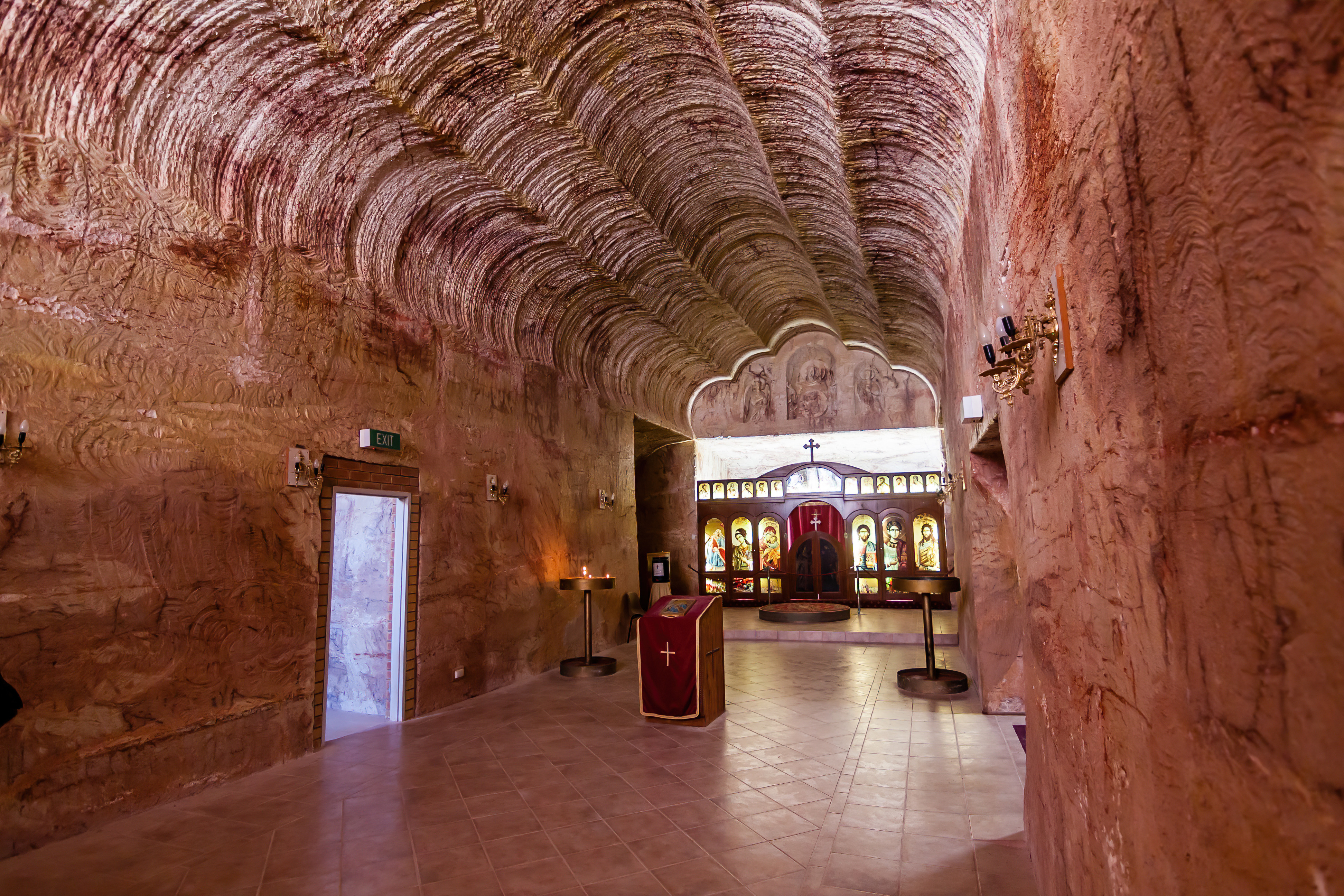Coober Pedy (pop. 1,437) is a mining town in the north-central region of South Australia. It is one of the largest producers of opals in the world. The town’s name comes from the Aboriginal phrase kupa piti, which is often translated as white man in hole or white man’s hole. The name is thought to have come from local Aboriginal people who observed European settlers digging underground shelters, also known as dugouts, in the area. The settlers chose to live in these dugouts to protect themselves from the region’s hot climate. 
Much of Coober Pedy is still located underground, and the town has become a popular tourist attraction. Many of the town’s residents still live in dugout houses. The town has several underground churches, including the Anglican Catacomb Church and the Serbian Orthodox Church of Saint Elijah the Prophet. The Umoona Opal Mine and Museum, a well-known tourist attraction, is based out of a former opal mine.
The land on which Coober Pedy sits is traditionally inhabited by the Antakirinja Matu–Yankunytjatjara people. The Aboriginal group’s ties to the land were officially recognized by the Australian government in 2011. The Coober Pedy area was first reached by Europeans in 1858, when an expedition party led by the Scottish-born explorer John McDouall Stuart traveled through the region.
Coober Pedy’s opal deposits were formed millions of years ago, when parts of South Australia were covered by an inland sea. Willie Hutchinson, the son of a local gold prospector, discovered opals at Coober Pedy in 1915. Following Hutchinson’s discovery, other settlers moved to the area and began mining for opals.
Around 1920, the town experienced an opal rush similar to earlier gold rushes in Australia. Prospectors flocked to Coober Pedy hoping to find the valuable stones. Many settlers in this group were soldiers who had recently returned home after fighting overseas in World War I (1914-1918). Throughout the 1900’s and into the 2000’s, Coober Pedy experienced periods of economic growth and decline based on the success of the opal mining industry.
